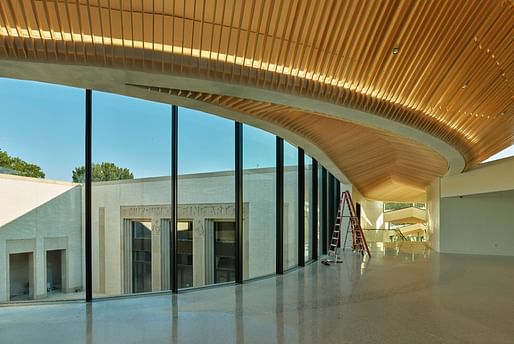

The American Institute of Architects has published a forecast for nonresidential construction spending for 2023 and 2024, in which it projects positive though modest growth. The AIA Consensus Construction Forecast was computed as an average of nine separate forecasts for nonresidential construction made by industry groups.
According to the AIA’s forecast, 2023 will see gains of just under 6% in nonresidential construction spending versus the previous year, with 3% for the commercial sector, 15% for industrial facilities, and 4% for institutional buildings. In 2024, the forecast expects annual nonresidential spending growth of under 1%, with a decline of 1.4% for commercial, a 0.4% increase for industrial, and a 3.8% increase for institutional facilities.
“Entering 2023, the construction industry will be confronted with mounting challenges,” said AIA Chief Economist Kermit Baker upon the forecast’s release. “In addition to high levels of inflation, rising interest rates, and continued supply change issues, many economic forecasters expect a recession this year, likely in the first half. While that will certainly impact the construction outlook, it will do so with a considerable lag.”
In a further sign of slowdowns in the construction sector, the AIA’s Architecture Billings Index recently fell below the significant '50' threshold in the fourth quarter of last year, representing a decline in billings. According to Baker, the lead time between design activity and construction activity is between 9 and 12 months, suggesting a slowdown in construction billings in the second half of 2023.
“Like construction companies, architecture firms are sitting on elevated backlogs of around seven months,” Baker added. “However, unlike construction companies, architecture firms have seen that backlogs can evaporate when business conditions weaken as clients may decide to delay or even cancel projects if they no longer make economic sense.”
The weakening growth projected for the second half of 2023 is expected to continue in 2024, with an overall growth of 0.8% in nonresidential projects. The strongest performers in 2024 are expected to be institutional projects with 3.8% growth, healthcare at 3.2% growth, and education and public safety, both at 4.6% growth.
Reporting on the latest figures, Baker highlights the ongoing growth in reconstruction projects across all major building categories, including renovations, retrofits, building additions, and historic preservation. In 2021, 62% of architecture firm revenues in commercial and industrial facilities came from reconstruction projects, representing a 38% increase over 15 years. Similar trends have been observed in institutional projects and, to a lesser extent, the residential sector.
“It’s likely that the pandemic has provided a boost to reconstruction activity,” Baker notes. “Many building uses have changed substantially with the pandemic as consumer spending behavior has evolved.”
“If a soft economy, high inflation, and high interest rates make more construction projects less feasible in the coming quarters, we can expect continued growth in the share of work coming from reconstruction projects, and a buffer against a more serious setback for the profession.”
The latest AIA figures come weeks after the institute’s Home Design Trends Survey offered a similar forecast for residential projects through 2023, with positive though slowing growth levels.
Also in December, the AIA released a separate study on student debt and its impact on demographic groups within the profession. In November, meanwhile, the institute issued a guide to addressing issues in architectural education, while October saw the institute offer an update on the progress of AIA 2030 signatories in reducing energy use in buildings.
No Comments
Block this user
Are you sure you want to block this user and hide all related comments throughout the site?
Archinect
This is your first comment on Archinect. Your comment will be visible once approved.